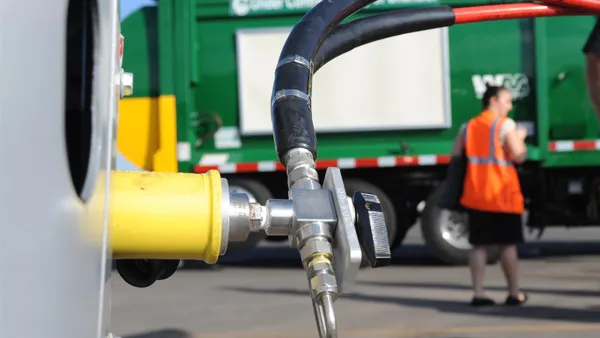Dive Brief:
- While 23 states currently define MSW incineration as a renewable energy source, a new report from the Institute for Local Self-Reliance (ILSR) contends that burning trash is "neither clean nor renewable."
- In spite of their economic, environmental and public health drawbacks, the report notes, many incinerators continue to be buoyed by green energy subsidies: 68% of operating facilities are located in states that classify them as a renewable source. Furthermore, states without incinerators still allow for the purchase of out-of-state renewable energy credits — opening the possibility of investment in incinerator-generated power from neighboring states.
- Rather than permitting the continual exploitation of the renewable energy landscape by incinerators, concludes the report, policymakers and advocates must push for legislation curtailing their influence while simultaneously shifting toward cleaner, economically superior options — including "zero waste," circular economy and solar energy.
Dive Insight:
With many of the country's incinerators nearing the end of their lifespans, advocacy groups are ramping up efforts to shut down local facilities. The ILSR paper, released Dec. 12, provides fuel for their arguments: waste incineration, maintains author Marie Donahue, represents an increasingly unviable financial, environmental and public health burden for cities.
The economic argument against incinerators is clear, notes Donahue — as energy prices continuing to decline, many incinerators are struggling to remain profitable. And while some are attempting to shoulder operating costs by raising tip fees (rates at incinerators are often two or three times higher than comparable recycling or composting costs), the extra revenue often still proves insufficient: multiple operators have announced plans to shutter sites in the face of financial pressures.
Burning trash, the paper points out, also poses significant health risks — harmful emissions have been linked to cancer, respiratory illness and cardiovascular disease — and, as the bulk of incinerators are built in marginalized communities of color, constitutes a textbook example of environmental injustice. It also comes with a significant environmental cost: incinerators produce 2.5 times more carbon dioxide per unit of energy generated than coal power plants. According to Donahue, few of the benefits of WTE actually justify these drawbacks — more energy can be saved through waste prevention, reuse, recycling or composting than can be generated through incineration.
Ultimately, the report dismisses the concept of renewable trash burning as a “legal oxymoron” propagated by the incineration industry to attract green energy subsidies. Rather than continuing to hand out subsidies to incinerators, it concludes, policymakers and environmental advocates should turn toward more sustainable options — including "zero waste," pay-as-you-throw programs, solar energy and dual-stream recycling.
Recent developments indicate growing political support in certain states for incineration divestment: proposed legislation to drastically reduce Baltimore Wheelabrator's emissions — and strip the facility of its green energy label — is gaining traction among state and local officials, while pressure from environmental groups in California helped stall a 2017 bill that would have granted WTE facilities renewable energy tax credits.
WTE proponents, however, argue that incinerators remain an environmentally superior alternative to landfills — currently the third-largest source of human-related methane emissions in the country. And while anti-incineration groups tout a host of sustainable alternatives to both WTE and landfilling, advocates commonly recognize a 90% diversion rate as the ceiling — leaving officials with limited options at present for the 10% of waste that can't be recycled or composted.










